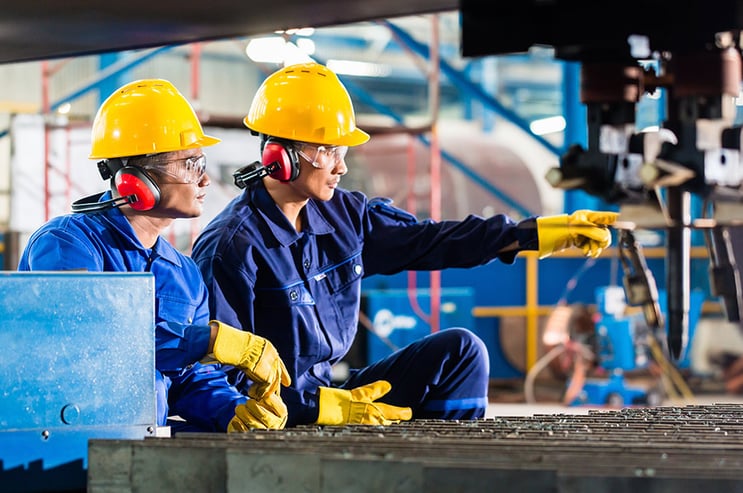Safety in the workplace, and maintaining a safe work environment, is important in any industry. In the manufacturing industry, this is especially important. This is because manufacturing often requires employees to handle dangerous equipment. Not only this but, depending on the type of manufacturing, employees may be required to handle hazardous chemicals and substances.
If you are in a managerial position in the manufacturing industry, you, as well as your staff, will navigate risks and dangers on a daily basis. In order to keep yourself and your staff safe, it is important to have processes in place. In this post we are going to provide some tips that can be implemented within a company to ensure the safety and well-being of a workforce is maintained.
Table of Contents
Create a Safety Culture
Creating a safety culture in your workplace is, by far, the most effective way to maintain workplace safety. Having clear procedures and providing information as well as training is important. But creating an environment where staff feel confident making safety decisions will guarantee the most positive results.
The relationship between management and those in the field should be symbiotic. By this we mean that management should work closely with their staff to create relationships that are communicative and mutually beneficial. If this is achieved, creating a safety culture in which everyone is involved will come easily.
Have Company-Wide Communication
This tip touches on something that was mentioned in the previous paragraph. Having workplace relationships that are communicative is the most efficient way to ensure safe conditions. Shortening the gap between management and floor staff will create an environment in which people are comfortable making decisions. Moreover, it will encourage people to reach out to management in the event of a problem.
Communication can be strengthened through good quality training, supervision and regular meetings on safety and procedure. Keeping everyone informed on safety issues, or compromises, is the best way to create an environment and culture that is committed to being safe. Make sure to include everyone, as people who have some influence are far more likely to be cooperative.
Insist On PPE
The wearing of personal protective equipment is important in a variety of industries. In a manufacturing environment, where staff may be required to handle dangerous materials or chemicals, it is vital. Different roles and forms of manufacturing will demand different forms of PPE. It is important to ensure that all staff adhere to the PPE requirements and guidelines with no exceptions. PPE will form a large part of the workplace culture, and every member of staff should be encouraged to embrace the wearing of PPE. Those in managerial positions may also find creating PPE checklists useful, and regular inspections of PPE should be completed. This will help keep inventory and determine whether any equipment is faulty or needs to be replaced.
Keep The Workplace Clean And Organised
In a manufacturing workshop, there will be many hazards and opportunities for people to injure themselves. By keeping the workplace clean and organised, and encouraging the entire workforce to follow, you will effectively minimise the risk of injury. Additionally, staff will be able to work quicker and more efficiently in an organised and clean workplace. Although every effort can be made to keep the workplace clean, in a manufacturing environment you may sometimes need additional support. Extractly are a fume extraction and ventilation specialist. Their dust extraction systems would be ideal for a manufacturing workshop. This will help keep the workplace clean and, most importantly, minimise hazardous airborne dust. Click here for more information.

Encourage Regular Breaks
Quite simply, accidents happen when people are tired and lack focus. In a manufacturing environment, people have to be alert and awake to make the right decisions. Long shifts and the repetitive use of machinery can lead to fatigue, which, ultimately, can lead to injury. By encouraging your workforce to take regular breaks, you are eliminating the likelihood of poor decisions being made as a result of fatigue.
Proper Use of Equipment
The proper use of manufacturing equipment needs to be enforced at all times. If the workplace is supporting new staff, thorough training needs to be given on using equipment. Additionally, those in a managerial position should supervise and oversee the use of equipment.
Prevent Slips and Falls
Slips and falls are among the most common injuries that occur in any workplace. The manufacturing industry is no exception. Our tip on keeping the workplace clean and organised supports this, as by doing so you will create an environment in which falls are unlikely to occur. The manufacturing floor must be free of blockages, and if chemicals or liquids are spilled they must be reported and cleaned immediately. Safety in manufacturing is achieved through communication and efficiency.
Promote Safe Lifting Techniques
Good posture is important throughout the day, but it is especially important for lifting heavy objects. In manufacturing you may be required to lift heavy or awkward objects from time to time. It is important to implement proper lifting techniques, and encourage staff to do so. This will help to curb the all too common lower back injuries.

